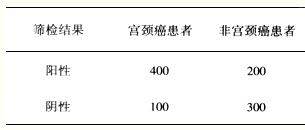
创建自己的小题库
搜索
【单选题】


When the first white men arrived in Samoa, they found blind men, who could see well enough to describe things in detail just by holding their hands over objects. In France, Jules Roman tested hundreds of blind people and found a few who could tell the difference between light and dark. He narrowed their photosensitivity(感光灵敏度) down to areas on the nose or in the finger tips. In 1960 a medical board examined a girl in Virginia and found that, even with thick bandages over her eyes, she was able to distinguish different colours and read short sections of large print. Rosa Kuleshova, a young woman in the Urals, can see with her fingers. She is not blind, but because she grew up in a family of blind people, she learned to read Braille to help them and then went on to teach herself to do other things with her hands. She was examined by the Soviet Academy of Science, and proved to be genuine, Shaefer made an intensive study with her and found that, securely blindfolded with only her arms stuck through a screen, she could tell the difference between three primary colours. To test the possibility that the cards reflected heat differently, he heated some and cooled others without affecting her response to them. He also found that she could read newsprint under glass, so texture was giving her no clues. She was able to identify the colour and shape of patches of light projected on to her palm or on to a screen. In rigidly controlled tests, with a blindfold and a screen and a piece of card around her neck so wide that she could not see round it, Rosa read the small print in a newspaper with her elbow. And, in the most convincing demonstration of all, she repeated these things with someone standing behind her pressing hard on her eyeballs. Nobody can cheat under this pressure. The first white men to visit Samoa found people who ______.
A.
were not entirely blind
B.
described things by touching them
C.
could see with their hands
D.
could see when they hold out their hands

 分享
分享
 反馈
反馈 收藏
收藏 举报
举报参考答案:


举一反三
【单选题】灵敏度是指
A.
试验检出阴性的人数占无病者总数的比例
B.
试验检出阳性的人数占有病者总数的比例
C.
筛检阴性者中真正成为非病人的可能性
D.
筛检方法能将实际有病的人正确地判为阳性的能力
E.
试验检出阳性的人数占无病者总数的比例
【单选题】灵敏度是指
A.
试验检出阳性的人数占有病者总数的比例
B.
试验检出阳性的人数占无病者总数的比例
C.
筛检阴性者中真正成为非病人的可能性
D.
试验检出阴性的病人占无病者总数的比例
E.
筛检方法能将实际有病的人正确地判断为阳性的能力

相关题目:
【单选题】灵敏度是指
A.
试验检出阴性的人数占无病者总数的比例
B.
试验检出阳性的人数占有病者总数的比例
C.
筛检阴性者中真正成为非病人的可能性
D.
筛检方法能将实际有病的人正确地判为阳性的能力
E.
试验检出阳性的人数占无病者总数的比例
【单选题】灵敏度是指
A.
试验检出阳性的人数占有病者总数的比例
B.
试验检出阳性的人数占无病者总数的比例
C.
筛检阴性者中真正成为非病人的可能性
D.
试验检出阴性的病人占无病者总数的比例
E.
筛检方法能将实际有病的人正确地判断为阳性的能力

参考解析:


AI解析
重新生成

题目纠错 0
发布

 复制链接
复制链接 新浪微博
新浪微博 分享QQ
分享QQ 微信扫一扫
微信扫一扫






